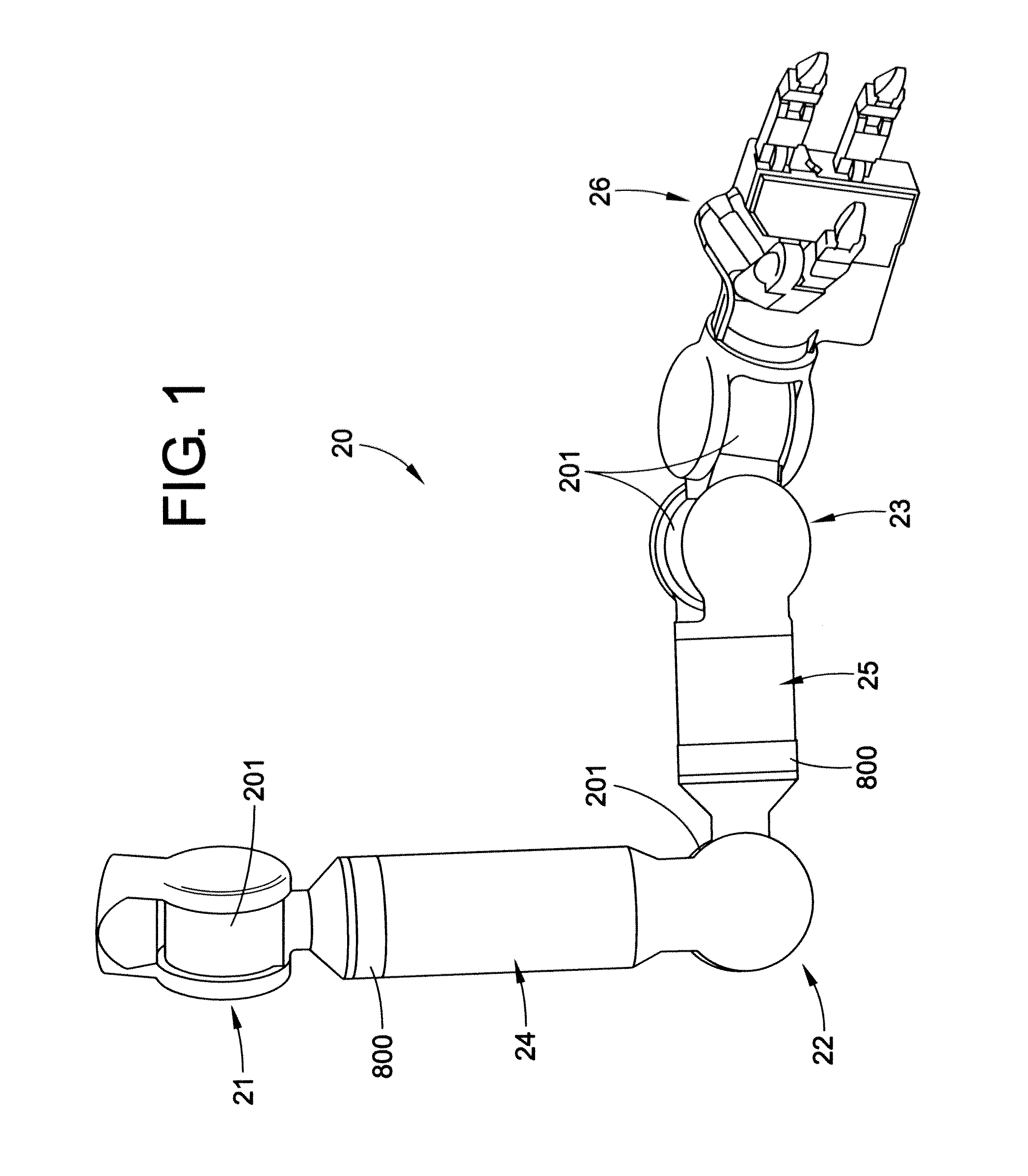Modular rotational electric actuator
a technology of electric actuators and modules, applied in mechanical equipment, manufacturing tools, gearing, etc., can solve the problems of increasing the weight of the system, and affecting the operation of the system
- Summary
- Abstract
- Description
- Claims
- Application Information
AI Technical Summary
Benefits of technology
Problems solved by technology
Method used
Image
Examples
Embodiment Construction
[0037]With reference to FIG. 1, an artificial or robotic limb 20 is shown, according to one embodiment of the present disclosure. By way of example, the robotic limb 20 may comprise an arm that includes a number of rotatable joints, such as a shoulder joint 21, an elbow joint 22, and / or a wrist joint 23. In addition, the robotic limb 20 may include one or more rotatable limb or arm segments 24, 25. A series of electromechanical robotic limb modular rotational electric actuators can be incorporated into either or both of the joints or limb segments for the purpose of moving a manipulator 26 or other object (e.g., tool, surgical device, weapon, etc.) in a prescribed manner necessary to perform a particular task or operation. A first embodiment of a modular rotational electric actuator 201 (also referenced herein as an actuator) is particularly adapted to be used at radial joint locations (such as the shoulder 21, elbow 22, and / or wrist 23). By comparison, a second embodiment of a modu...
PUM
 Login to View More
Login to View More Abstract
Description
Claims
Application Information
 Login to View More
Login to View More - R&D
- Intellectual Property
- Life Sciences
- Materials
- Tech Scout
- Unparalleled Data Quality
- Higher Quality Content
- 60% Fewer Hallucinations
Browse by: Latest US Patents, China's latest patents, Technical Efficacy Thesaurus, Application Domain, Technology Topic, Popular Technical Reports.
© 2025 PatSnap. All rights reserved.Legal|Privacy policy|Modern Slavery Act Transparency Statement|Sitemap|About US| Contact US: help@patsnap.com



